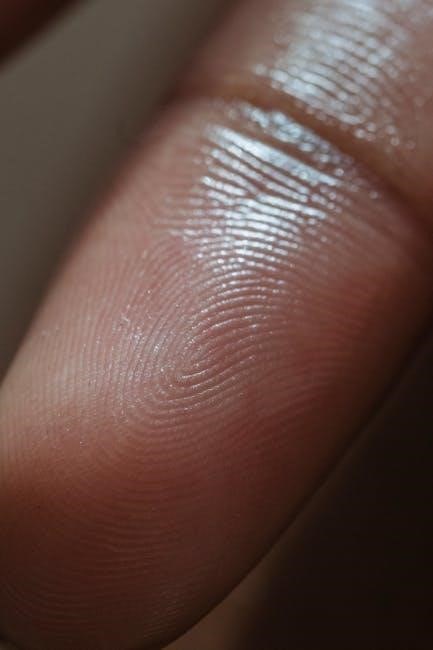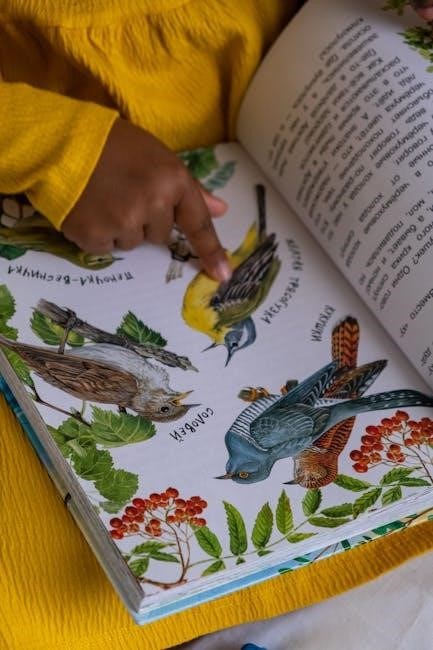Antique Clock Value Guide⁚ A Comprehensive Overview
This guide offers a detailed exploration of antique clock valuation. Learn to identify key features, assess condition, and research market values to understand your timepiece’s worth. Discover expert appraisal options and navigate the complexities of the antique clock market.
Determining the Type of Clock
Correctly identifying your clock’s type is the foundational step in valuation. Is it a grandfather clock, a mantel clock, a wall clock, or a carriage clock? Each type commands a different market value due to size, design, and materials. Observe the case style—tall and slender for grandfather clocks, smaller and ornate for mantel clocks, or simple and functional for wall clocks. Note the mechanism’s location—grandfather clocks typically have the movement at the top, while others may have it in the base or integrated into the design. Consider the clock’s face—is it a simple dial or an elaborate piece of art? These visual cues are crucial in determining the clock’s category and subsequent value assessment. Accurate classification significantly impacts the appraisal process.
Identifying Maker’s Marks and Labels
Maker’s marks and labels are crucial for authenticating and valuing antique clocks. Examine the clock’s movement, the inside of the case, and the clock face for any inscriptions, stamps, or labels. These markings often include the maker’s name, location, and date of manufacture. A clearly identified maker significantly increases a clock’s value, especially for renowned clockmakers. Authenticity is paramount; counterfeit marks drastically reduce value. Research the maker’s history and reputation; a well-known maker often commands higher prices. If markings are unclear or absent, detailed photos are helpful for expert consultation. Thorough investigation of maker’s marks provides vital information for accurate assessment and pricing. The presence (or absence) of original markings directly influences the final valuation.
Assessing the Clock’s Condition and Authenticity
Careful examination of the clock’s condition is essential for accurate valuation. Assess the overall physical state, noting any damage, repairs, or alterations. Examine the case for scratches, dents, or missing parts. Inspect the movement for wear, corrosion, or signs of previous repairs. The clock’s face should be checked for cracks, discoloration, or missing pieces. Authenticity is critical; any evidence of replacement parts or significant restoration reduces value. Compare the clock to known examples of the same model for consistency. Detailed photographic documentation is extremely helpful in assessing both condition and authenticity. Consider consulting with an expert for a thorough evaluation, especially if you are unsure about the clock’s originality or the extent of any restoration. A comprehensive condition report contributes significantly to the final valuation.
Factors Affecting Antique Clock Value
Several key factors influence an antique clock’s value⁚ style, rarity, materials, craftsmanship, and overall condition. These elements interact to determine its market worth.
Style and Design Influence
The style and design of an antique clock significantly impact its value. Highly sought-after periods and aesthetics, such as the ornate designs of the Victorian era or the clean lines of Art Deco pieces, command higher prices. Specific design elements, like intricate carvings, inlaid materials, or unique case shapes, can also increase desirability and value. Conversely, simpler or mass-produced designs may hold less value. The clock’s overall aesthetic appeal to collectors and enthusiasts plays a crucial role in determining its market worth. Consider the influence of renowned clockmakers and their signature styles. A clock’s design should be assessed in relation to its historical context and prevailing artistic trends. The presence of unique or unusual features can significantly enhance a clock’s collectible appeal and, consequently, its value. Detailed craftsmanship and the use of high-quality materials further contribute to a higher value.
Rarity and Collectibility
Rarity is a primary driver of antique clock value. Limited production numbers, unique features, or maker’s marks significantly increase a clock’s worth. The level of collector interest also influences value; highly sought-after styles or makers command premium prices. Condition plays a crucial role; a rare clock in poor condition may be less valuable than a common clock in excellent condition. Collectors actively seek specific models, movements, or makers, creating a fluctuating market based on current demand. The overall desirability within the collector community directly correlates with a clock’s market value. Researching the maker’s history and production output can provide insight into a clock’s rarity. Understanding the collector market is essential; knowing what styles or makers are currently in high demand allows for accurate valuation. Limited edition clocks or those with verifiable provenance often command higher prices.
Materials and Craftsmanship
The materials used in constructing an antique clock significantly impact its value. High-quality woods like mahogany or ebony, precious metals like silver or gold, and intricate inlay work command higher prices. The craftsmanship exhibited in the clock’s construction is equally important. Fine detailing, precise mechanics, and the overall quality of assembly are key factors. Hand-crafted movements are typically more valuable than mass-produced ones. The presence of unique or rare materials, such as specific types of wood or unusual metals, can significantly enhance a clock’s worth. Examine the level of detail in carvings, the quality of the finish, and the precision of the mechanical components. A well-preserved clock exhibiting superior craftsmanship is more desirable and valuable than one showing signs of wear or poor workmanship. The overall aesthetic appeal created by the combination of materials and skilled craftsmanship directly reflects on the clock’s monetary value.
Researching Market Value
Understanding market value requires exploring online resources, analyzing auction results, and consulting with experienced appraisers. This multifaceted approach provides a comprehensive understanding of your antique clock’s worth.
Utilizing Online Price Guides and Databases
Numerous online resources offer valuable insights into antique clock pricing. Websites specializing in antiques often feature extensive databases with photographs, descriptions, and price history for various clock types. These databases can be searched by maker, style, and other identifying features. Remember to critically evaluate the information found online, as prices can vary depending on condition, rarity, and the specific marketplace. Cross-referencing information from multiple sources is recommended to gain a broader perspective on market value. Some sites boast databases of over 10,000 clockmakers and 21,000 antique clock descriptions, providing a wealth of data for comparison. Always consider that online prices represent past sales and may not perfectly reflect current market conditions. Supplement online research with other valuation methods for a thorough assessment.
Analyzing Auction Results
Auction records provide a valuable benchmark for assessing antique clock value. Websites and auction houses frequently publish past results, offering insights into realized prices for similar clocks. When analyzing auction data, focus on comparable pieces⁚ consider the clock’s maker, style, age, materials, and condition. Note that auction prices can be influenced by various factors, including buyer demand, the auction house’s reputation, and the overall economic climate. Pay close attention to the descriptions and accompanying photographs to ensure an accurate comparison. Researching auction results across multiple platforms can help you identify trends and establish a reasonable price range for your clock. Remember that auction prices may not always reflect the true market value, as they can be subject to competitive bidding and market fluctuations. Use auction data in conjunction with other valuation methods for a comprehensive assessment.
Consulting with Experts
Seeking expert advice is crucial for accurate antique clock valuation. Professional appraisers specialize in assessing the authenticity, condition, and market value of antique timepieces. They possess extensive knowledge of clockmaking history, styles, and makers’ marks. A consultation with an expert can provide an unbiased assessment, crucial for insurance purposes or when buying or selling. Before selecting an appraiser, verify their credentials and experience. Reputable appraisers will provide a detailed report outlining their findings and valuation methodology. The cost of a professional appraisal varies depending on the clock’s complexity and the appraiser’s fees. While a professional appraisal offers significant value, you can also seek advice from experienced antique clock dealers or collectors. Their insights into market trends and specific clock models can be invaluable in determining a fair market value for your timepiece. Remember to obtain multiple opinions for a more comprehensive understanding.
Appraisal and Valuation
Professional appraisal provides an unbiased assessment of your antique clock’s condition, authenticity, and market value. Understanding appraisal reports is key for informed decision-making, whether insuring, buying, or selling.
Professional Antique Clock Appraisals
Seeking a professional appraisal is crucial for accurate valuation of your antique clock. Reputable appraisers possess extensive knowledge of antique clocks, thoroughly examining the piece’s condition, authenticity, and maker’s marks. They consider factors such as style, materials, craftsmanship, and rarity, referencing market data from auctions and sales records. A detailed appraisal report will include supporting documentation and photographic evidence. This ensures a fair and objective assessment of your clock’s worth. The cost varies depending on the appraiser’s expertise and the clock’s complexity. Choosing a qualified appraiser with relevant certifications and experience is paramount to obtaining a reliable valuation. This professional evaluation is valuable for insurance purposes, estate settlements, or when buying or selling your antique timepiece; Remember to clarify the appraisal’s scope and intended use beforehand.
Understanding Appraisal Reports
A comprehensive appraisal report provides detailed information about your antique clock’s value. Expect a description of the clock, including its type, maker, age, and any distinguishing features. The report should include high-quality photographs showcasing the clock’s condition, highlighting any damage or repairs. Crucially, the report will state the estimated market value, often differentiating between fair market value (what a willing buyer would pay a willing seller), insurance value (replacement cost), and auction value (potential price at auction). The appraiser’s methodology and research should be clearly explained, referencing sources used to determine the value. Look for details on comparable sales, auction results, and other relevant market data. Any limitations of the appraisal should also be disclosed. Understanding the report’s contents empowers you to make informed decisions regarding your antique clock, whether you’re insuring it, selling it, or simply wanting to understand its worth.


